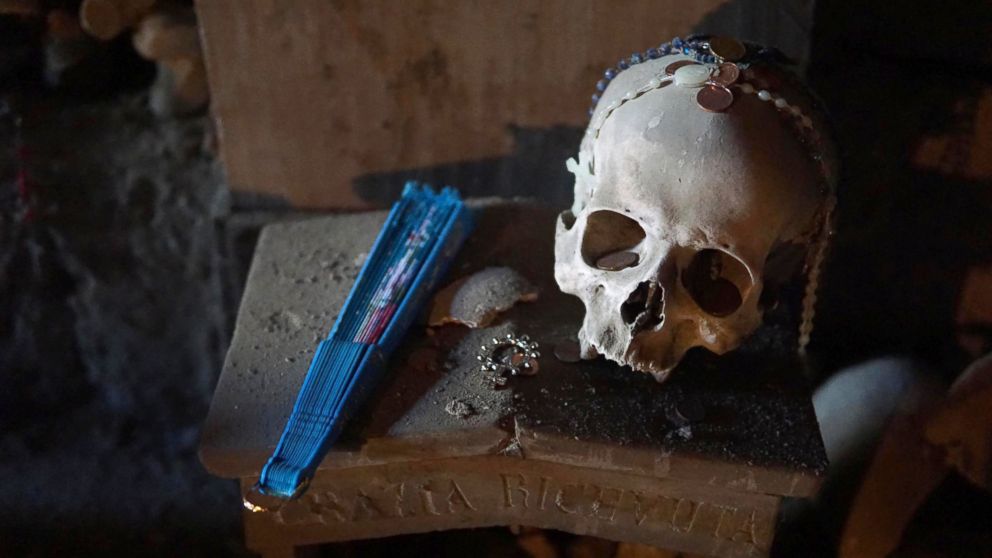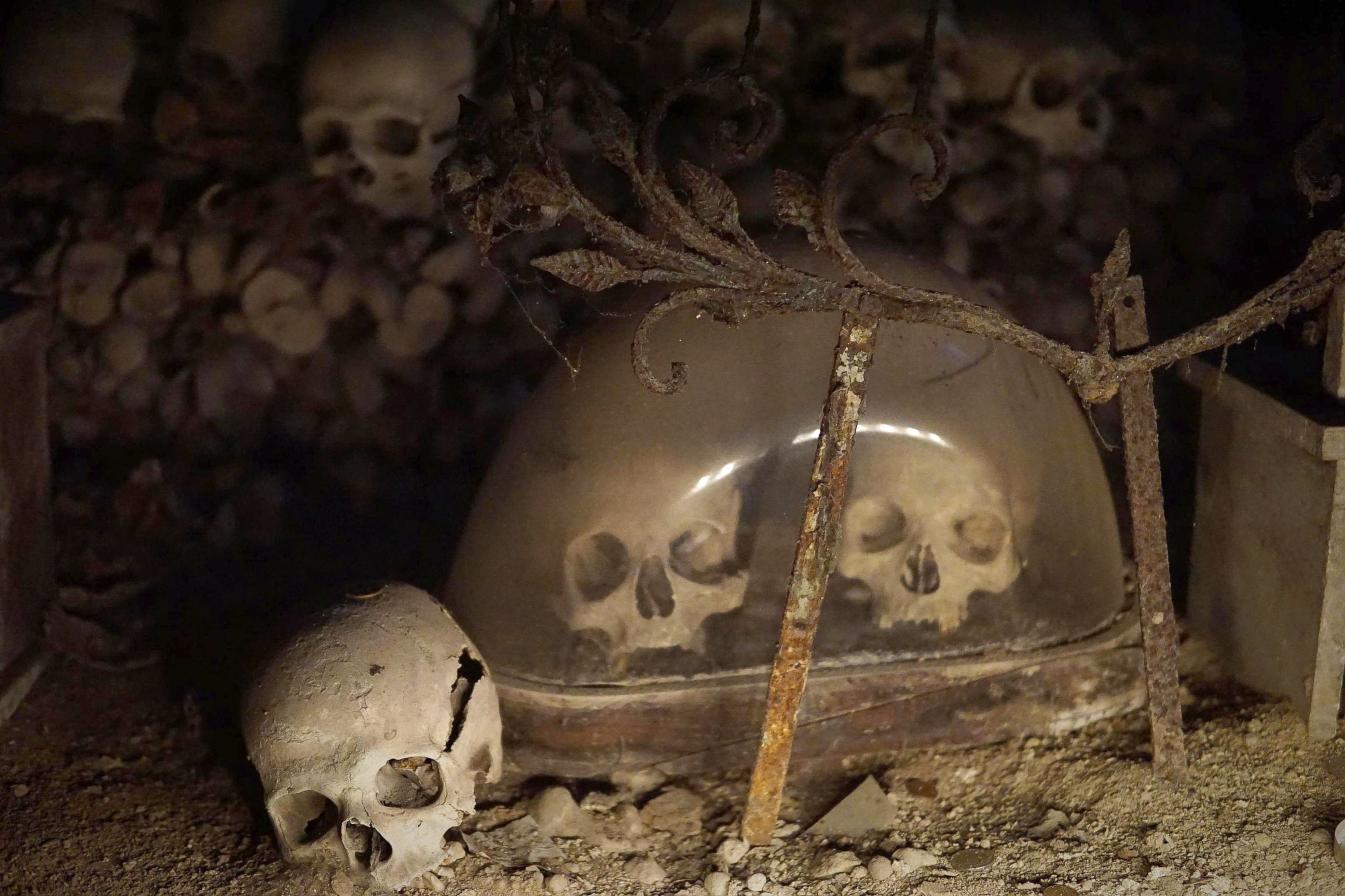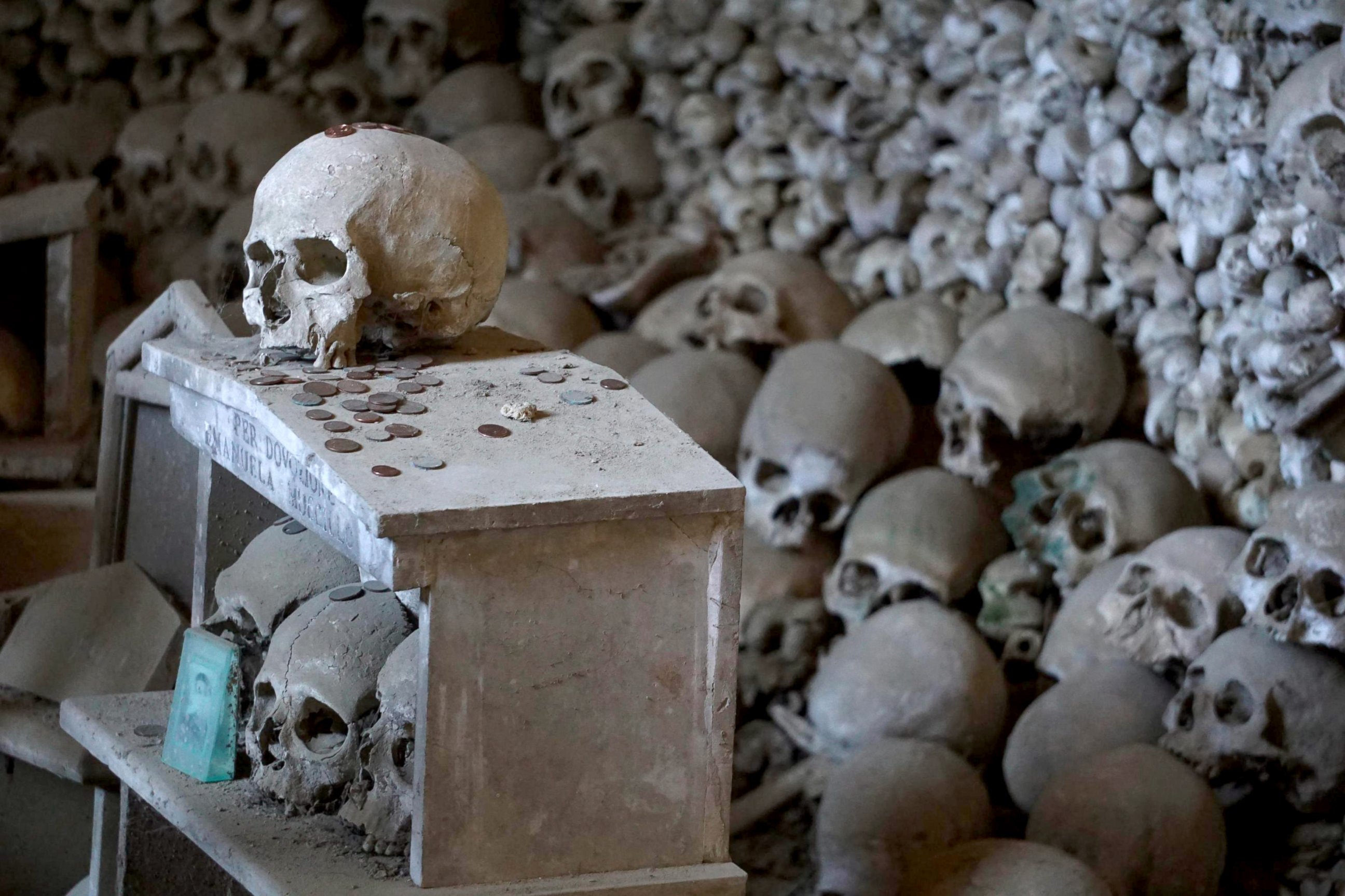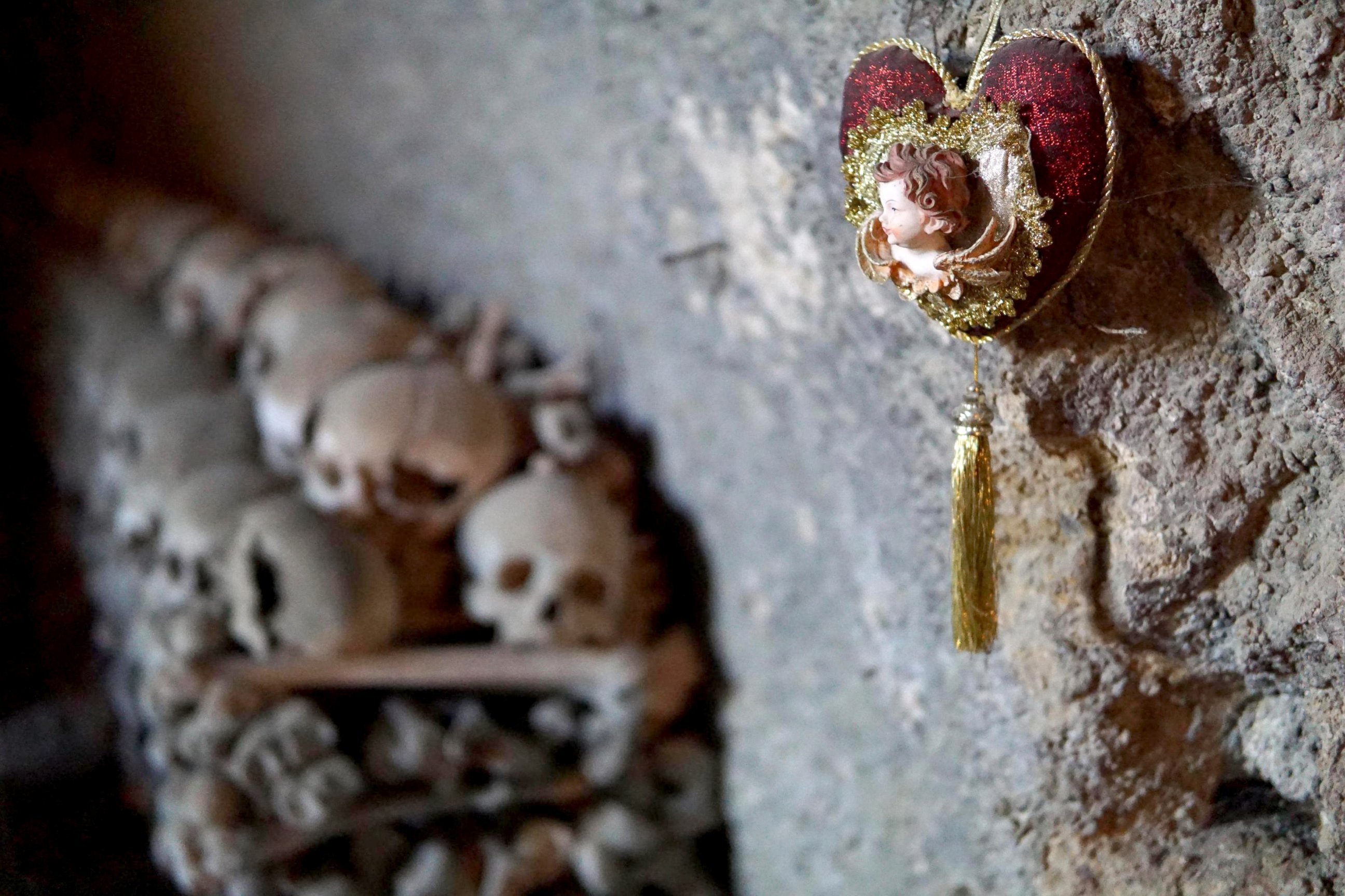Inside Naples' 'Cult of the Dead'
Visitors bring gifts for the dead and ask for favors in return.

— -- Over a few hundred years, a cult of devotion to the remains of the dead developed at the Fontanelle cemetery in Naples, Italy. The 16th-century cave is the epicenter of what is known as "The Neapolitan Cult of the Dead" or "The Neapolitan Skull Cult."


A vast underground ossuary was used to bury the corpses of people for whom there was no room in the city’s churches. The anonymous bones are referred to by the Neapolitans as the "anime pezzentelle," or "little wretches." Visitors bring gifts for the dead, leaving items such as toys for the children and coins for the rest, and ask for favors in return.

A large number of the residents arrived during the plague of 1656, which claimed the lives of an estimated 150,000 -– half the population of the city of Naples. The cave became a chaotic pile of skulls and bones until 1872, when Father Gaetano Barbeti began cataloging and organizing the remains, stacking them on shelves and places them in boxes. As the sorting took place, volunteers began praying for the deceased, beginning a long tradition of care and ritual, and tales of miracles.





